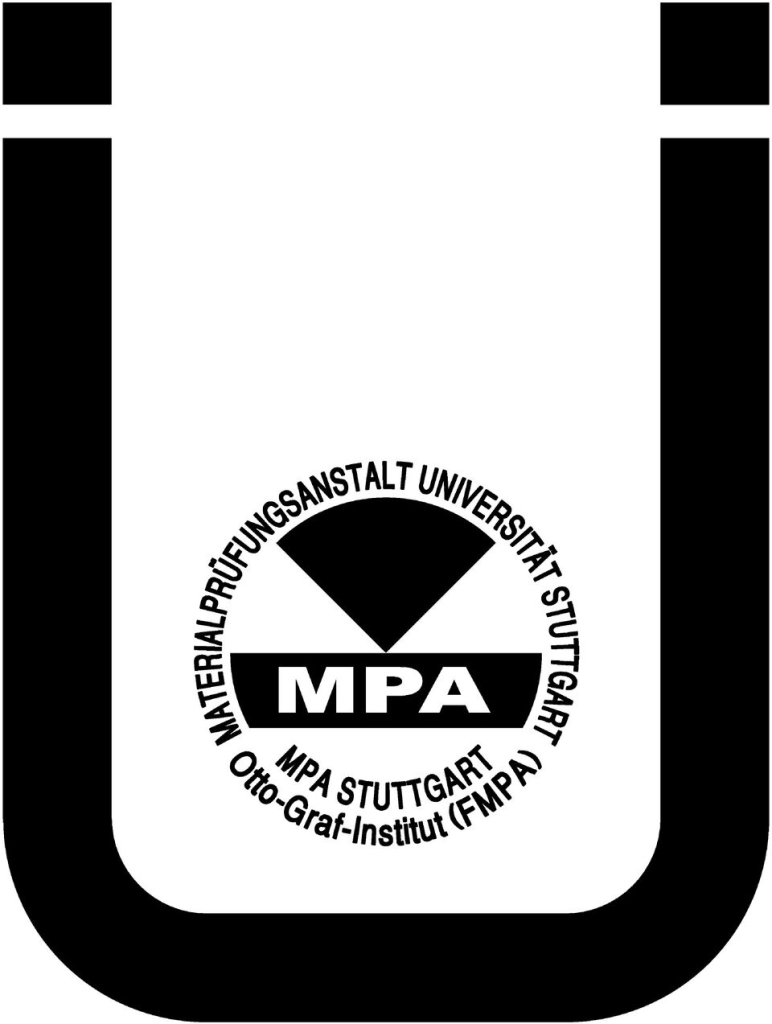Internal Roof Insulation with Pavatex Wood Fibre
Internal Roof Insulation
- Breathable, hygroscopic and capillary-active insulation so water vapour can pass through the insulation, keeping the roof timbers dry
- Wood fibre buffers moisture so keeps relative humidity at optimum levels
- Excellent thermal mass properties so significantly reduces summertime overheating in lightweight roof structures
- Acoustic insulation through the roof will be enhanced due to high density and fibrous structure of the wood fibre
- Thermal bridging eliminated if the wood fibre boards are fitted to the underside of the rafters
- Isolair Multi has tongue & groove joints to reduce risk of thermal leakage
- Carbon-negative and natural, sustainable insulation – safe to handle
- Can be finished with plasterboard or Baumit lime plaster
Jump to your preferred option by choosing one of the below:
Pitched Roof
Option 1: Existing Pitched Roof with Internal Roof Insulation - Rafters 100mm Deep (min)
Pavatex Isolair Multi wood fibre boards and Pavaflex / Pavatextil P flexible insulation batts are ideal to use as Internal Roof Insulation between, and under, the rafters. Isolair Multi is water resistant so can be used between the rafters maintaining the required 50mm ventilation space above the insulation. Alternatively, the ADB Breather Membrane can be draped under, and between, the rafters and this will keep flexible wood fibre insulation dry, which isn’t water retardant.
U-value examples are shown below.
Existing Roof

Baseline Roof
Option 2a

Better U-Value – Rafters Not Extended – Insulation between and under rafters
Option 3a

Best U-Value – Rafters Extended – Insulation between and under rafters
Option 1

Reasonable U-Value – Rafters Extended – Insulation between rafters only
Option 2b

Same as 2a, but also including a Services Void, if required
Option 3b

Same as 3a, but also including a Services Void, if required
Internal Roof Insulation on Pitched Roof with 100mm min. Deep Rafters
- Existing Roof Tiles
- Existing Tile Battens or Sarking Board
- Existing Roof Felt or Bitumen
- New 50mm high timber battens fixed to top sides of rafters to create a 50mm ventilated space
- PAVATEX PAVACOLL Glue to bond battens to rafters
- 30/40mm ISOLAIR MULTI water retardant wood fibre boards cut to fit between rafters – screwed to underside of battens
- PAVAFLEX (50 / 80 / 100 / 140mm) or PAVATEXTIL P (45 / 80 / 100 / 145mm) flexible insulation friction fitted between rafters (extended or not)
- PAVATEX DB 3.5 Airtightness Membrane
- 12.5mm Plasterboard and skim, if desired
- ISOLAIR MULTI wood fibre screwed to underside of rafters (if plaster finish is required)
- 8mm Baumit lime plaster finish (2 coats with mesh)
- PAVATHERM (40-140mm) wood fibre square edged boards (if plasterboard finish is required)
- New battens under PAVATHERM joints perpendicular to rafters
Internal Roof Insulation on Pitched Roof with 100mm min. Deep Rafters
Existing Roof

Baseline Roof
Option 1

Reasonable U-Value
Rafters Extended – Insulation between rafters only
Option 2a

Better U-Value
Rafters Not Extended – Insulation between and under rafters
Option 2b

Same as 2a, but also including a Services Void, if required
Option 3a

Best U-Value
Rafters Extended – Insulation between and under rafters
Option 3b

Same as 3a, but also including a Services Void, if required
- Existing Roof Tiles
- Existing Tile Battens or Sarking Board
- Existing Roof Felt or Bitumen
- New 50mm high timber battens fixed to top sides of rafters to create a 50mm ventilated space
- PAVATEX PAVACOLL Glue to bond battens to rafters
- 30/40mm ISOLAIR MULTI water retardant wood fibre boards cut to fit between rafters – screwed to underside of battens
- PAVAFLEX (50 / 80 / 100 / 140mm) or PAVATEXTIL P (45 / 80 / 100 / 145mm) flexible insulation friction fitted between rafters (extended or not)
- PAVATEX DB 3.5 Airtightness Membrane
- 12.5mm Plasterboard and skim, if desired
- ISOLAIR MULTI wood fibre screwed to underside of rafters (if plaster finish is required)
- 8mm Baumit lime plaster finish (2 coats with mesh)
- PAVATHERM (40-140mm) wood fibre square edged boards (if plasterboard finish is required)
- New battens under PAVATHERM joints perpendicular to rafters
Alternative Option
The ISOLAIR MULTI layer can be omitted and replaced with the PAVATEX ADB Breather Membrane. This membrane must be draped under each rafter (extended or not) and up along the side of each rafter, as far as the 50mm batten, then across the space and back down along the next rafter. This space under the membrane will then be filled with PAVAFLEX or PAVATEXTIL P flexible insulation. The 50mm ventilation cavity will be maintained above the membrane so will ensure that any condensation in this cold space will be able to evaporate away.

We can supply all the relevant products below.
- Leave roof tiles or slates, horizontal tile-battens, sarking board, roof felt etc in place. Ensure there is good ventilation at the eaves and it is also good to have it at the ridge too.
- Glue 50 x 50mm (HxW) timber battens on either side of the rafters using PAVACOLL GLUE, as per drawings above to provide the minimum 50mm ventilation space.
- Cut ISOLAIR MULTI (30/40mm) water resistant wood fibre T&G boards so that they fit snugly between the rafters. Screw these to the underside of the timber battens using Ejot STR-H thermally broken fixings. The Isolair Multi boards can be optionally replaced by the PAVATEX ADB Breather Membrane (see below).
- Extend the rafters, if desired. This will give a better U-value.
- Fully fill between the rafters with 600mm wide PAVATEXTIL P (45, 80, 100, 145mm) or 375 / 575mm wide PAVAFLEX (50, 80, 100, 140mm) flexible insulation batts.
- Optional - PLASTERED FINISH: ISOLAIR MULTI T&G boards can be screwed to underside of rafters (using STR-H fixings) and these can be plastered directly with Baumit RK70 lime plaster, inserting a Reinforcing Mesh into the base coat. Baumit RK70 or Klima Glatt can be used as the top coat. The Isolair Multi boards will break the thermal bridge through the rafters and the lime plaster will provide airtightness.
- Optional - PLASTERBOARD FINISH: Fit PAVATEX DB 3.5 Airtightness Membrane to the underside of the rafters and bond it well to the perimeter walls. PAVATHERM square-edged boards or ISOLAIR MULTI T&G boards can be screwed to underside of membrane and rafters (using Heco Topix 6 fixings). Install 25mm battens to make a Services Void, if required, and fix Plasterboard or Fermacell finishing board to battens only to prevent cold spotting.
- NOTE: The PAVATEX ADB Breather Membrane can be used instead of the 30/40mm Isolair Multi wood fibre boards between the rafters. This needs to be stapled under each rafter and pushed up the side of each rafter as far as the 50x50mm battens and brought across and back down the side of the rafters. It will need to be bonded to the rafters using PAVATAPE 12 double-sided tape. The required 50mm ventilation space will be above the membrane. This is quite fiddly to fit but will keep the flexible insulation between the rafters dry from condensation, as this is not water resistant.
- PAVAPRIM –To prime wood fibre before applying PAVATAPE
- PAVATAPE 12 – Double-sided tape for bonding membranes to all substrates and for bonding membrane ends to each other
- PAVACOLL – Adhesive for sealing battens to rafters
Downloads
Option 2: Existing Pitched Roof with Internal Roof Insulation - Rafters 75mm Deep (max)
Pavatex Isolair Multi wood fibre boards can be used as Internal Roof Insulation under rafters that are only 75mm deep or less. A 50mm ventilated space must be maintained above the insulation so there would not be adequate space left to also include insulation between the existing rafters. As a result, we recommend that Isolair Multi is fitted directly below the rafters. Isolair Multi is water retardant and has tongue and groove joints so this will ensure that no condensation will drip down into the insulation. The Isolair Multi can be finished with lime plaster or plasterboard, or for a better U-value, new 50mm minimum battens can be fitted below the rafters and then filled with flexible insulation.
U-value examples are shown below.
Existing Roof

Baseline Roof
Option 2

Better U-Value and Airtightness
With Insulation and Airtightness Membrane below rafters
Option 1

Reasonable U-Value and Airtightness
With Insulation below rafters
Option 3

Best U-Value and Airtightness
With extra Insulation and Airtightness Membrane below rafters
Internal Roof Insulation on Pitched Roof with 75mm max. Deep Rafters
- Existing Roof Tiles
- Existing Tile Battens or Sarking Board
- Existing Roof Felt or Bitumen
- Existing rafter left empty to create a 50mm min ventilated space
- OPTIONAL: PAVATEX ADB Breather Membrane
- ISOLAIR MULTI (30 – 200mm) water retardant wood fibre boards screwed to underside of rafters
- 8mm Baumit lime plaster finish (2 coats with mesh)
- PAVATEX DB 3.5 Airtightness Membrane
- 25mm battens to create a Services Void
- 12.5mm Plasterboard and skim, if desired
- 50mm min. new battens filled with PAVAFLEX or PAVATEXTIL P flexible insulation
- Ejot STR-H thermally broken fixings (40mm embedment)
- Heco Topix 6 Fixings (40mm embedment)
Internal Roof Insulation on Pitched Roof with 75mm max. Deep Rafters
Existing Roof

Baseline Roof
Option 1

Reasonable U-Value and Airtightness
With Insulation below rafters
Option 2

Better U-Value and Airtightness
With Insulation and Airtightness Membrane below rafters
Option 3

Best U-Value and Airtightness
With extra Insulation and Airtightness Membrane below rafters
- Existing Roof Tiles
- Existing Tile Battens or Sarking Board
- Existing Roof Felt or Bitumen
- Existing rafter left empty to create a 50mm min ventilated space
- OPTIONAL: PAVATEX ADB Breather Membrane
- ISOLAIR MULTI (30 – 200mm) water retardant wood fibre boards screwed to underside of rafters
- 8mm Baumit lime plaster finish (2 coats with mesh)
- PAVATEX DB 3.5 Airtightness Membrane
- 25mm battens to create a Services Void
- 5mm Plasterboard and skim, if desired
- 50mm min. new battens filled with PAVAFLEX or PAVATEXTIL P flexible insulation
- Ejot STR-H thermally broken fixings (40mm embedment)
- Heco Topix 6 Fixings (40mm embedment)
We can supply all the relevant products below.
- Leave roof tiles or slates, horizontal tile-battens, sarking board, roof felt etc in place. Ensure there is good ventilation at the eaves and it is also good to have it at the ridge too.
- Due to lack of space, it is best to leave all the space between the rafters open for ventilation.
- Screw ISOLAIR MULTI (30-200mm) T&G water-resistant wood fibre boards to the underside of the rafters using STR-H Fixings for plaster finish or Heco Topix 6 Fixings for plasterboard finish. The Isolair Multi board will break the thermal bridge through the rafters.
- Optional - PLASTERED FINISH: Plaster the ISOLAIR MULTI directly with Baumit RK70 lime plaster, inserting a Reinforcing Mesh into the base coat. Baumit RK70 or Klima Glatt can be used as the top coat. The lime plaster will provide airtightness.
- Optional - PLASTERBOARD FINISH: Fit PAVATEX DB 3.5 Airtightness Membrane to the underside of the wood fibre and bond it really well to the perimeter walls. Install battens to make a Services Void, if required, and fix Plasterboard or Fermacell finishing board to battens only to prevent cold spotting.
- PAVAPRIM –To prime wood fibre before applying PAVATAPE
- PAVATAPE 12 – Double-sided tape for bonding membrane (if using) to all substrates and for bonding membrane ends to each other
Downloads
U-Value Results
Rafters with a Minimum Depth of 100mm
Existing Pitched Roofs – Rafters 100mm min
- Roof Tiles on 25mm Tile Battens
- Rafters with top 50mm left empty to provide 50mm Ventilation Space
- 30mm Isolair Multi Wood Fibre between Rafters
- Pavaflex or Pavatextil P between extended Rafters
- OPTIONAL: Pavatherm Wood Fibre under Rafters
- DB 3.5 Airtightness Membrane under Pavatherm
- 25mm Services Void – uninsulated
- 12.5mm Plasterboard & Skim

| Pavatherm Thickness Below Rafters (mm) | U-Value for 30mm Isolair Multi & 50mm Pavaflex between 130mm Rafters (W/m²K) | U-Value for 30mm Isolair Multi & 80mm Pavaflex between 160mm Rafters (W/m²K) | U-Value for 30mm Isolair Multi & 100mm Pavaflex between 180mm Rafters (W/m²K) | U-Value for 30mm Isolair Multi & 150mm Pavaflex between 230mm Rafters (W/m²K) |
|---|---|---|---|---|
| No Pavatherm | 0.48 | 0.37 | 0.32 | 0.24 |
| 40mm | 0.32 | 0.26 | 0.24 | 0.19 |
| 60mm | 0.27 | 0.23 | 0.21 | 0.17 |
| 80mm | 0.24 | 0.21 | 0.19 | 0.16 |
| 100mm | 0.21 | 0.19 | 0.17 | 0.15 |
* U-Value without any insulation: 2.19 W/m²K
Rafters with a Maximum Depth of 75mm
Existing Pitched Roofs – Rafters 75mm max
- Roof Tiles on Tile Battens
- Rafters left empty to provide 50mm min Ventilation Space
- Isolair Multi (30–200mm) Wood Fibre below Rafters
- DB 3.5 Airtightness Membrane under Isolair Multi
- 25mm Services Void – uninsulated
- 12.5mm Plasterboard & Skim

| U-Value for No Insulation (W/m²K) | U-Value for 40mm Isolair Multi Below Rafters (W/m²K) | U-Value for 60mm Isolair Multi Below Rafters (W/m²K) | U-Value for 80mm Isolair Multi Below Rafters (W/m²K) | U-Value for 100mm Isolair Multi Below Rafters (W/m²K) |
|---|---|---|---|---|
| 2.19 | 0.72 | 0.54 | 0.43 | 0.35 |
Please contact us if you require other U-values calculated.
The Benefits of Internal Roof Insulation
Internally insulating a roof with wood fibre insulation is carried out in retrofit projects when the roof covering does not need to be removed. If the roof tiles or slates are being removed during the renovation, we strongly recommend that you insulate above the rafters – see External Roof Insulation. Roofs are insulated at rafter level when the attic area is being used as a living space or where the property has vaulted ceilings. It is more sensible to insulate the loft floor if the loft space is not being used.
It is critical to keep a 50mm well-ventilated space above the insulation to allow all the water vapour to evaporate away safely. Pavatex wood fibre insulation is breathable, hygroscopic and capillary-active so water vapour can pass through the insulation from areas of high humidity to lower humidity – generally from inside to outside. This contributes greatly to keeping the roof timbers and building fabric dry. Wood fibre buffers moisture so keeps buildings at an optimum humidity level which results in a healthy indoor climate. This greatly reduces the chances of mould, wet rot or dry rot occurring.
If there is adequate room height, we recommend that Isolair Multi or Pavatherm boards are installed below all the rafters because this will reduce cold bridges through the rafters. This heat retention is very considerable because the rafters typically take up 9 to 15% of the entire roof surface and the heat will escape through these timber elements if not insulated.
Because Isolair Multi boards are water-resistant, we recommend placing a thin layer of this between rafters that are at least 100mm deep so that any condensation from below the roof covering will run down the surface of the Isolair Multi boards and evaporate away. An alternative is to drape the Pavatex ADB Breather Membrane under each rafter and up along the rafter sides, across the cavity and back down the side of the next rafter. It is critical to keep a 50mm ventilated cavity above the membrane. Then these ‘pockets’ are fully insulated from below with Pavaflex or Pavatextil P flexible insulation.
Converted attic areas of buildings tend to overheat during the summer because there is virtually no thermal mass in a lightweight roof covering. On warm sunny days, there will be considerable solar gain through the windows leading to high temperatures in attic spaces. Most insulation materials have low thermal mass so they can’t store this excess heat effectively. However, wood fibre has a high density and a high Specific Heat Capacity, so these attributes contribute to high thermal mass. This excess heat from the sun will be stored for between 10 and 12 hours when it will then be released as temperatures drop, whereas other insulation materials can only provide 5 to 8 hours lag time. This keeps buildings a few degrees cooler during the warmer summer months. The reverse happens in winter when the heat from the central heating system will be stored in the wood fibre layer and released at night-time as temperatures drop. This is particularly crucial when the loft space is used as living accommodation.
Acoustic insulation through the roof will be greatly improved with the addition of dense wood fibre sarking boards so will reduce external noise from rain, traffic or airplanes.

Quality Assured Products from Pavatex by Soprema






